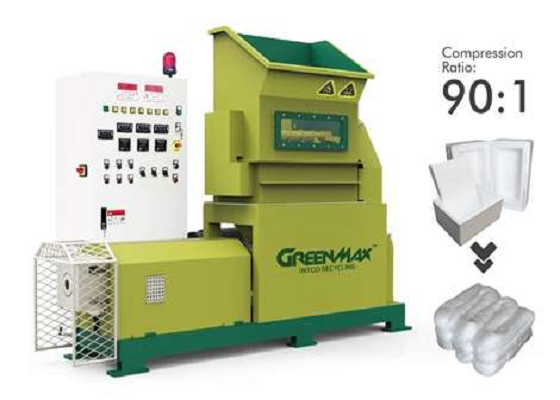Styrofoam melting machine can help University of Cincinnati College of Medicine recycle medical supplies packaging
The University of Cincinnati College of Medicine has embarked on a bold new project—a program to recycle expanded polystyrene (EPS), which includes plastic foam packaging and Styrofoam—thanks to the dedication and enthusiasm of a few dedicated individuals. The main cause of the waste is that the research labs order supplies and subsequently receive a lot of perishable and temperature-sensitive products, like hormones, antibodies, and reagents, which are transported in styrofoam containers and padded with packing peanuts. Styrofoam garbage ends up in landfills since local recycling services do not yet take it.

Styrofoam is a common foam plastic and a non-degradable material. If buried in the soil, it will cause environmental pollution, especially significant changes in the microbial community, which will affect the soil microbial environment and destroy the ecosystem. Therefore, we must choose to use the appropriate method for styrofoam recycling. In fact, using a styrofoam melting machine is a good choice. It is currently understood that the college will work with the University of California to entrust waste styrofoam to a company in Ohio to help compress and recycle it. This also confirms that recycling equipment is indispensable in the process of recycling styrofoam.

In fact, if the college generates too much waste styrofoam, it can choose to arrange a styrofoam melting machine at a fixed location in the school. This equipment is the simplest to operate among all the equipment of the GREENMAX brand. It mainly uses hot melt technology to compress styrofoam. The compression ratio of the GREENMAX styrofoam melting machine can reach 90:1. Set the machine parameters in advance before use, then put the waste into the crushing bin of the machine, and then after heating and extrusion, you can get dense styrofoam ingots. "This is about doing the right thing and taking responsibility for the waste we generate," said the person in charge. "Our long-term goal is to divert 100% of the college's styrofoam waste and avoid it entering local landfills. We hope to create a more sustainable environment for our children and grandchildren.
.jpg)
